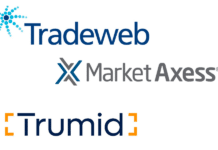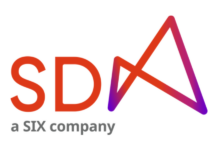TransFICC, the specialist provider of low-latency connectivity and workflow services for Fixed Income and Derivatives Markets, has launched a new initiative to develop a Consolidated Tape (CT) for fixed income.
The pressure to increase transparency in European bond markets has been accelerated this year with battles over data ownership in the face of a protracted regulatory drive, and the UK’s market regulator, the Financial Conduct Authority (FCA), opening a consultation on fair access to data for the buy side. In the UK, the issue of a consolidated tape was consulted upon in the Wholesale Markets Review which concluded in July 2021. In November 2021 the Economic Secretary to the Treasury said that he would be publishing a full summary of the responses to the consultation early in 2022 and will set out the Government’s plans to take this work forward.
The European Commission’s planned consolidated tape for all European Union markets still lacks some detail needed to progress.
“The regulators want the CT but the final shape and feel of what the project looks like – particularly the governance aspects – are not yet finalised,” says Steve Toland, co-founder of TransFICC. “So, we saw the requirements, we knew we could build the tech, but whether we should be the organisation deemed the consolidated tape provider (CTP) is a different question. If another group is identified as a good governing body, but they don’t have the developers to build the tape itself, we want to be the technology provider.”
As part of this initiative, TransFICC has developed a production ready pilot, for banks, asset managers and regulators to test.
“We estimate an average activity level of 80,000 trades a day in cash corporate and government bonds [in Europe], and when we build systems we build them at ten times peak activity, which set the level to being able to handle 30 messages a second,” says Toland.
By using components from TransFICC’s existing normalised post-trade feed, the new CT is predicted to have a shorter development timeline and lower development costs than other CT initiatives, which TransFICC expects will result in a cost-effective solution for the market – a key requirement for the EU.
“The harder thing we think is for people to contribute to the tape,” says Toland. “At the moment, all the venues need to send post-trade data to the APAs. The EC has determined that there will be a consolidated tape provider (CTP) and all of the venues, systematic internalisers etc. in future will need to send their data to the consolidated tape.”
To facilitate this process in the pilot, the firm has developed simpler means of connecting and accessing data, in addition to the right level of message publishing.
“We have built an HTTP API to allow some venues, systematic internalisers and so on so to contribute post-trade messages as they complete them, and we add them to the tape,” he says. “We already code to venues via a FIX API today for post trade Fixed Income data. For our pilot we are publishing a stream of Consolidated Tape post trade events at a rate of 30 messages a second. A consolidated tape user can log onto our client library, which we already provide for production customers and they can then subscribe and start listening to those 30 messages a second. Our API sample code is available via GitHub and they can get the code and hit ‘run’ then it works within a few minutes.”
TransFICC has also joined the CT regulatory sandbox operated by the Dutch regulatory, the Authority for the Financial Markets (AFM). The AFM has said it considers a post-trade CT an essential part of a true Capital Market Union (CMU) to level the playing field for all market participants.
“In the middle we are working with the AFM to ensure reliability, the right level of disaster recovery failover and so on,” Toland notes.
The AFM supports initiatives to develop proof-of-concept CTs, on a voluntary and non-exclusive basis through its regulatory sandbox. This allows the industry to gain experience and establish best practices to work towards meaningful and easy to implement solutions.
In its assessment of CT providers, the EU has proposed a list of key attributes, which TransFICC says it can already match, and the firm is inviting clients and regulators to test its production ready CT pilot in terms of ease of integration, performance at production level loads, and the robustness of the system.
In more detail, banks, asset managers and regulators taking part in the TransFICC CT pilot will:
1. Access the TransFICC Client Library API which also supports Pre-trade data, CLOB and RFQ trading protocols, as well as Post-trade, across an extensive list of venues (shown here): https://transficc.com/product
2. Subscribe to the TransFICC CT Pilot feed, which will publish fixed income trade messages at a rate of 30 messages per second, 24/7. Instruments being published include rates and credit and interest rate swaps (IRSs).
Throughput of 30 messages per second (2.6 million per day) is 10 times the current daily rate and provides capacity for periods of market volatility, according to TransFICC.
3. Contribute data to the CT via a simple API.
4. Access to sample code, so that Developers will be able to receive messages in minutes.
5. Test High Availability and DR switch over. TransFICC will host in the cloud in Frankfurt, and in Equinix hosting centres in London and Frankfurt.
“Working with the AFM as part of its regulatory sandbox allows us to further develop and test TransFICC’s CT technology,” said Godfried De Vidts, regulatory affairs advisor at TransFICC, and senior adviser to ICMA. “A CT is still to be fully defined in terms of what data is captured, how long after the trade it is made available, and how it will be regulated. However, working in the AFM sandbox allows us to refine product functionality, as requirements continue to evolve.”
©Markets Media Europe 2025













